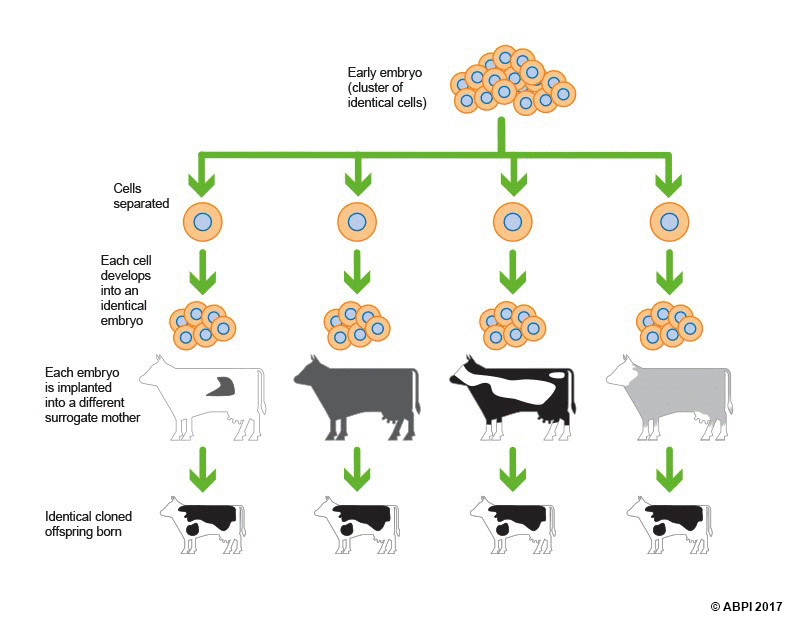This topic takes on average 55 minutes to read.
There are a number of interactive features in this resource:
 Biology
Biology
 PSHE / Citizenship studies
PSHE / Citizenship studies
Artificial twinning is also called embryo cloning or embryo splitting. Identical twins can form naturally when an early embryo splits and two foetuses grow from the two resulting embryos: artificial twinning occurs in the same way, but the embryo is split manually.
Artificial twinning is really a technological advancement on embryo transfer, which has been used in the cattle industry for many years. In this process, a cow with desirable traits is treated with hormones so that she super-ovulates, producing many eggs at one time. The eggs are fertilised and then flushed out of the uterus of the biological mother and placed in surrogate mothers.
Early embryos are collected in the same way in artificial twinning. At this stage in their development the cells are totipotent (able to form all cells needed in, and to support the growth of, the organism) and are still capable of splitting to naturally form identical twins. The early embryo is artificially split, typically using a very fine razor blade, into smaller early embryos (each just as capable of forming a healthy adult as the original embryo) which are then grown in a lab for a few days. If they develop correctly in that time, they can be implanted into surrogate mothers. The embryo has a good chance of developing properly and of growing into a healthy adult.

The principles of artificial twinning
Carrying multiple foetuses can cause a number of problems for the mother in both pregnancy and birth. To avoid this, scientists can transfer each early embryo into a different surrogate mother. However, this cannot happen in all cases: some animals, such as pigs, naturally produce several offspring each pregnancy. Therefore, if just one embryo is implanted into a surrogate pig, the pig’s body may not recognise that it is there and the embryo is lost. Several embryos need to be transferred for pregnancy to be induced in a surrogate pig.
In fact, embryos which are artificially split into twins have a number of advantages over naturally occurring twins even when carried by the same mother. The later the early embryo splits, the more complications there are with pregnancy and childbirth – such as cord entanglement and problems caused by sharing a placenta. Artificial twinning ensures that the embryo is split early so each foetus has its own placenta and amniotic sac and so the risk of something going wrong is lowered.
Unlike cloning by nuclear transfer, the number of clones that can be produced from one organism is limited (by the number of times an embryo can be split) and as the genetic material of the embryo is not extracted there is less opportunity for genetic engineering. As this technology mirrors a natural process and builds on a technique used in farm animals for many years, many people see no problems with its use being continued in the same way as now. Some people even think that this method could (and should) also be applied in humans, although a change in UK law would be required before this could happen.